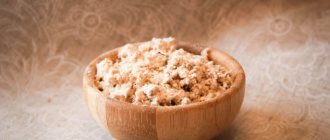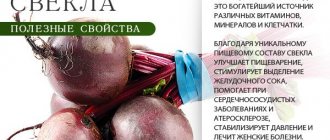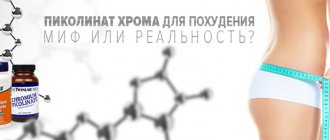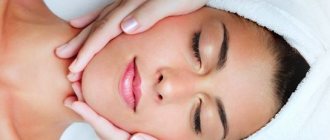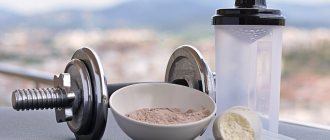Monastic tea (collection) is a unique set of herbs that have healing properties. The composition of this collection is balanced and has a fairly broad effect on the human body. Since ancient times, monks have been growing and collecting medicinal plants, making various infusions from them and using them to treat ailments. The monastery tea contains herbs that can be used to support and strengthen the body in the presence of serious illnesses, speed up recovery, and avoid complications. The components of such a drink do not undergo special processing; they go on sale in their pure, natural form. As a rule, the use of such an infusion does not cause side effects, and the occurrence of allergies is also unlikely.
Truth or scam?
Monastic tea has become widely known recently. Currently, more and more people are using traditional options for treating diseases. One of these options is the monastic collection of herbs.
The composition contains dried plants and herbs, which have very healing properties and have a beneficial effect on the entire body as a whole. There is quite a wide variety of types of this tea, each of which helps in the treatment of a specific disease. The composition can contain completely different types of herbs, but at the base you can often find chamomile, burdock, pine needles, rose hips, dandelion, St. John's wort. Sometimes the composition may include berries and other natural ingredients. All these components have long been known and widely distributed, they contain nutrients and can provide significant assistance in the treatment of the disease. It has long been proven and tested that many herbs help strengthen the immune system, remove toxins and harmful compounds from the body, reduce inflammation and much more. Those. Such tea will definitely not do any harm, but on the contrary, it will help cope with many health problems.
Unfortunately, nowadays quite often people come across fakes. Monastic tea is no exception. Manufacturers offer tea, which is significantly different in composition from that of the monastery, but they claim that their collection is the real one. And the price, as a rule, for such a fake is quite high. The counterfeit packaging does not contain any ingredients, does not indicate the place where the plants were collected, and there is no description of the healing properties. Scammers often claim that the tea they offer was collected in ecological places over which prayers were read daily. This is a lie. A person can easily be sold tea of unknown origin, which can also cause harm. Therefore, it should be understood that such tea should not be purchased in pharmacies, not through the Internet or intermediary companies, but precisely where it is collected and packaged - in monasteries or churches. This is where the name of the tea comes from. What is offered in other places is a real scam.
The most important thing is that you need to approach the use of monastery tea wisely. It is not a cure for diseases; when taking it, you cannot refuse full-fledged traditional treatment. It serves as a useful adjunct to primary therapy. Tea is not able to completely heal the body from the disease, but will only support the body or promote a speedy recovery.
Monastery tea for thrush
Monastic tea is a traditional medicine, recognized even by real professional doctors. It has also been recognized as an effective remedy in the treatment of thrush (or as it is scientifically called “candidiasis”), the occurrence of which is provoked by the “candida” fungus.
The monastery's tea collection is truly unique. It contains many herbs that can give a weakened body a boost of essential vitamins and microelements.
Treatment of thrush with tea involves brewing it as usual: two teaspoons of the tea per half liter of boiling water. This tea should stand covered for ten to fifteen minutes and only then should it be drunk. This tea effectively eliminates the unpleasant symptoms of thrush in both women and men.
The main rule of such treatment is to correctly observe the proportions of brewing tea and withstand the entire course of treatment, regularly drinking the drink three times a day.
Monastic tea against thrush will help get rid of the following unpleasant symptoms:
- eliminate pain of any nature in the internal genital organs: ovaries, uterus, as well as in the vagina
- minimizes the chance of exacerbation of the disease
- improves a woman’s immune system, making her resistant to infections
- will reduce the inflammatory process
- will have a powerful restorative effect on the body
- will have antibacterial properties, destroy fungus and a number of bacteria that serve as causative agents of this disease
monastery tea is a sure remedy in the treatment of thrush in both women and men
History of appearance
Some legends say that the invention of monastery tea belongs to monks who lived in Belarus in the 16th century. Life in monasteries at that time was quite difficult, the monks engaged in hard physical labor every day and observed strict fasts. To support the body, give it more strength and fight diseases, they collected unique medicinal plants and brewed tea. Due to the certain specificity and asceticism of life in monasteries, grass was collected from a nearby forest or field. Today, many monasteries have a plot of land that is used for monastic needs, including growing medicinal plants for making monastic tea.
There is another opinion that for the first time the composition for the monastery healing infusion was compiled and then prepared in 1430 by clergy in the Solovetsky Monastery (it was also called Spaso-Preobrazhensky), which was located on islands in the White Sea. The real recipe for this tea was even written down in the special charter of the monks. It has not survived to this day, but they say that it contained only those herbs that grew exclusively in the island part of the White Sea.
Monastery tea for sweating
Hyperhidrosis is a disease that is characterized by a person’s increased susceptibility to sweating in any situation. Often this unpleasant disease not only causes discomfort during everyday life and reduces a person’s social activity, but also increases the risk of various fungal diseases appearing on the skin.
Monastic tea is a mild medicine that can cope with problems of this nature very effectively. The secret of tea is that its collection contains several plants that are most beneficial for humans, capable of:
- improve the functioning of human internal organs
- normalize the water-salt balance in the body
- have a powerful anti-inflammatory and restorative effect
- strengthens the immune system
- regulates the functioning of the sebaceous and sweat glands
- improves overall well-being
Monastery tea helps eliminate the problem of excessive sweating
Composition of herbs and plants
The most universal type of tea in terms of healing properties is considered to be restorative monastery tea. It has the ability to have a healing effect on all organs and systems of the human body, supplies vitamins to the body, is able to restore cells, strengthens the immune and endocrine systems, supports the gastrointestinal tract, and eliminates minor problems in the musculoskeletal system.
The composition of the monastery tea includes the following components:
- Elecampane. A very good antiseptic, eliminates inflammation of various types and tones. Has powerful expectorant and diuretic effects.
- Sage. Has bactericidal qualities. Gives monastery tea a delightful aroma.
- Oregano. Helps restore the liver, increases appetite, and eliminates insomnia. It has a beneficial effect on the gastric mucosa and the nervous system as a whole. Normalizes metabolism, improves digestion. It has calming and tonic qualities.
- St. John's wort. It is an excellent antidepressant, improves mood and eliminates insomnia.
- Rose hip. Strengthens and increases the level of immunity, slows down aging, it contains vitamin C in large quantities.
- Fireweed. This herb contains microelements beneficial to the body, has an antiseptic and cleansing effect, gives energy, and improves mood. Helps cope with diseases of the esophagus.
In addition, the collection contains a number of elements and chemical compounds useful for the body, namely:
- Polyphenolic compounds. They have a positive effect on blood pressure, increase the elasticity of blood vessels and prevent varicose veins.
- Antioxidants. Effectively destroy harmful substances - free radicals, and also protect the body's cells.
- Tannins. They have a powerful anti-inflammatory effect.
- Polysaccharides. They have a positive effect on brain activity and also normalize blood sugar.
- Tannin. Tones the body, improves memory and attention.
- Microelements and vitamins. They have a positive effect on the entire body as a whole.
- Essential oils. They have bactericidal and relaxing effects.
Monastic tea for psoriasis
Psoriasis is far from an infectious disease that manifests itself on the human skin as a result of impaired functioning of internal organs, in particular the liver and kidneys.
Monastic tea can help a person cope with this unpleasant disease by adjusting the body’s metabolic processes and saturating it with essential microelements and vitamins.
Many are confident that it is simply impossible to cure psoriasis - every quarter, depending on a person’s condition, his lifestyle and even the season, it reappears and causes discomfort.
Monastery tea, which carries out several important stages of action, will help improve the condition of a person suffering from psoriasis:
- effectively eliminates unpleasant itching, soothing it
- relieves any inflammatory process in any area of the skin
- can positively influence blood circulation in the human body
- has a powerful antibacterial effect
- reduces allergic reaction
Treatment of psoriasis with monastery tea involves combining it with other medications for greater effectiveness. The secret of the monastery tea is that it has a powerful restorative effect, thanks to a good collection of medicinal herbs and plants.
monastery tea in the treatment of psoriasis and inflammatory skin diseases
Benefits for the body
Monastery tea has a number of beneficial properties. Within a few days from the start of use, you can feel the positive effect, and with regular use, you will notice a noticeable improvement in your overall condition. The benefits of the infusion are as follows:
- Feeling better, energy levels and stamina increase.
- The state of the gastrointestinal tract is normalized.
- The immune system increases and strengthens, the body becomes more resistant to many diseases.
- Calms the nervous system, prevents stress, normalizes sleep.
- Metabolism improves.
- It has an antiseptic effect and helps the body fight inflammatory processes.
- Stabilizes blood sugar
- Blood pressure normalizes and the risk of hypertension decreases.
- It has a positive effect on the functioning of the kidneys, effectively removes sand, and prevents the appearance of stones in the gall bladder.
- Tea has a diuretic effect, which helps cope with bacterial infections of the genitourinary system.
- The body is cleansed of harmful substances, toxins and waste, as well as the circulatory system.
Monastery tea is also used to prevent the development of various diseases, such as:
- Various oncological diseases.
- Ulcer of the stomach and duodenum.
- Dysbacteriosis is a disorder of the intestinal microflora.
- Pancreatitis – inflammation of the pancreas
- Kidney and liver diseases.
- Bronchial asthma.
- Prostatitis.
- Cardiovascular diseases. Tea can prevent heart attack, angina, ischemia, and blood clots.
- Joint pathologies.
Monastic tea for diabetes
Monastery tea helps those suffering from diabetes mellitus to cope with their serious illness. This drink can have a positive therapeutic effect on humans:
- tea helps normalize blood sugar levels in diabetics
- the drink helps improve carbohydrate metabolism in the body, which leads to sugar surges
- tea helps normalize metabolism in the body
- tea has a positive effect on the functioning of the pancreas, which is responsible for the sufficient production of a substance in the human body - insulin
- tea eliminates the risks of possible complications during an exacerbation of the disease
- tea has a beneficial effect on the process of losing weight and effectively helps to lose weight, which is good for people suffering from diabetes
If you have diabetes, you should take properly brewed monastery tea half an hour before each meal. The course of treatment is every two months every two months.
monastery tea is an effective remedy for improving your condition during diabetes
Harm and contraindications for use
Monastery tea is an absolutely natural product, it contains only herbs. Therefore, it has practically no contraindications. But each person has his own individual characteristics, so before starting to drink this tea, it would be a good idea to consult with your doctor. There are several situations when drinking monastery tea is not recommended. Such situations include the following:
- Allergy to one of the tea components. Although tea contains mainly herbs that are not capable of causing allergies, intolerance may occur. The main symptoms of this condition may be: swelling, headache, rashes and itching. People prone to allergic reactions are advised to try the tea in small quantities first. If no adverse reactions occur, then the tea can be consumed in full.
- It is not recommended to drink monastery tea during pregnancy. Certain types of herbs can lead to miscarriage, as well as possible fetal pathologies.
- It is also not recommended to use the infusion during breastfeeding. In this case, the child is transferred to artificial formula.
Monastic tea for high blood pressure
Pressure surges: its increase and decrease are a common occurrence in the modern world. A person is subject to a lot of stress, lives every day in unfavorable environmental conditions and has a lot of diseases from a young age. Monastery tea is a mild remedy and medicine against hypertension.
Both chronic patients and people who do not regularly experience pressure surges can use monastery tea to treat hypertension. It has been noticed that if a person has the first or second degree of the disease, then this drink can also completely relieve him of the disease. In the third and fourth - improve your well-being and general condition.
It is strongly recommended that you consult with your doctor about using monastery tea to treat hypertension and only then start the course.
If you have hypertension, monastery tea helps:
- normalize a person's blood pressure
- exclude the possibility of an unexpected hypertensive crisis
- eliminate the possibility of an unexpected stroke
- eliminate infrequent or regular headaches that appear due to pressure surges
- lower the amount of cholesterol in the blood to a normal level
- make vascular walls more elastic
- eliminate frequent or rare tingling sensations in the heart
- eliminate periodic numbness of a person’s hands and feet
- saturate the body with essential microelements for heart function
- improve the body's metabolic processes
- improve the functioning of the nervous system and normalize sleep and rest patterns
Monastery tea helps fight high blood pressure problems
Cooking at home
The infusion can be prepared at home. Of course, it will be different from the one purchased in the temple, but the healing properties will not be lost from this. The composition includes five ingredients: elecampane (root), St. John's wort, rose hips, oregano, black or green tea. All ingredients can be purchased at any pharmacy and markets. There are three main cooking recipes.
Classic recipe
- Mix all components, maintaining proportions.
- Take 15-20 g of the mixture, pour it into a kettle and brew it with a glass of boiling water.
- Wrap the kettle well in a warm cloth and let it brew for about 30 minutes.
- Ready tea must be consumed immediately and cannot be stored. Adding sugar or jam is allowed.
Cooking in a water bath
Cooking for this recipe takes a little longer than the classic one. But there is a significant advantage - you can drink this tea throughout the day.
- First you need to combine 20g of rose hips and 20g of elecampane.
- Add a liter of boiling water to the resulting mixture. Keep in a water bath for 30-35 minutes.
- Next, add the remaining components (20g each, add 10g of tea) and leave for another 40 minutes.
Before drinking, you need to dilute the tea leaves with water. Adding sugar is also allowed.
Recipe from the Solovetsky Monastery
This recipe uses additional ingredients: lemon, dandelion, ginger, burdock, horsetail and honey.
- You need to take 5g of burdock, dandelion and horsetail (brew each herb in separate containers), add 50 ml of hot water for each type, bring to a boil, stirring constantly.
- After boiling, remove from heat and set aside for 2 hours.
- After two hours, you need to strain and combine everything.
- Add lemon juice (from half a lemon), 20 g of ginger and 10 ml of honey to the resulting mixture.
- You can drink tea after about half an hour.
Hearty monastery tea
If you have heart disease, monastery tea helps:
- normalize a person's blood pressure
- eliminate the possibility of an unexpected heart attack
- lower the amount of cholesterol in the blood to a normal level
- make the vascular walls and walls of the heart organ more elastic
- eliminate frequent or rare tingling sensations in the heart
- eliminate periodic hand numbness
- saturate the body with essential microelements for heart function
- improve the body's metabolic processes
- improve the functioning of the nervous system and normalize sleep and rest patterns
Monastery tea helps fight heart disease
How much to drink - treatment
Although monastery tea is a natural product, there are still a few simple rules for its proper use. By following simple recommendations, you can get the maximum benefit and achieve the best results in strengthening and improving your health.
- You should drink monastery tea no more than 2-3 times a day.
- The course of treatment lasts one month, followed by a break of three months. After this period, the treatment is repeated.
- You need to drink a healing drink in combination with a diet prescribed for a specific disease. Alcohol is completely excluded during this period.
- It is necessary to maintain a positive attitude and believe in the healing power of the drink.
- You should not stop taking it prematurely, even if you do not get the desired immediate result. The effect of use may appear after some time.
- You can add honey or lemon to the finished drink, this will only enhance the healing effect.
Reception of monastery tea. How to drink monastery tea correctly?
Monastic tea promises to help a suffering person get rid of many diseases, but only if it is used correctly. Proper brewing of tea, its timely consumption and compliance with proportions will help you get maximum health benefits.
Before drinking monastery tea for treatment, you should be aware of some subtleties:
- Tea should always be taken only as recommended by your doctor. Self-medication does not always lead to good results
- Follow the prescribed regimen for consuming monastery tea; this is the only way after a while you can see the positive results of its action.
- When drinking tea for the purpose of treatment, you should not expect instant results, because this is not a “quick-acting” pill. Relief comes gradually and only with time
- If necessary, do not limit your treatment to just one course, but take two or three until complete recovery, so that your disease recedes completely
- During treatment with monastery tea, it is recommended to adhere to a special diet that will enhance the effect of each component of the tea and make this drink as beneficial as possible.
- Believe in the power of healing and take tea only with positive thoughts
How to brew monastery tea correctly:
- Monastery tea can be brewed in absolutely any container, the most comfortable is an ordinary cup
- Before brewing tea, rinse the cup with boiling water to sterilize it and warm it up slightly.
- Pour one teaspoon of the mixture into a cup
- Boil the kettle and pour boiling water at 80-90 degrees over your mixture
- The amount of boiling water per teaspoon of herb is two hundred milliliters
- Cover the cup with a plate or saucer for brewing
- Note the time: the tea should steep for exactly fifteen minutes.
- After the set time, calmly drink tea
Treatment with monastery tea involves drinking it daily in the amount of three to four cups per day. If desired, the taste of the drink can be brightened with sugar or natural honey and a slice of lemon.
rules for brewing and drinking monastery tea
There is also an interesting rule for drinking tea in relation to food. Here we are talking about which part of the body your disease affects. If you are above your waist, drink tea after or during meals; if below your waist, you should drink tea half an hour before meals.
Storage
It is necessary to understand that the medicinal properties of monastery tea directly depend on how and where it is stored. Therefore, this issue must be approached responsibly, so as not to be disappointed later in the lack of the expected effect. Proper storage of herbal collection implies the following:
- It is necessary to store strictly in a dark, dry and cool place, the most suitable temperature is 15-20 degrees. When exposed to light, the collection loses its color, a foreign odor may appear, and its properties will be lost. Humidity is also unacceptable; this is an ideal environment for the development of bacteria and mold;
- the storage container should close well, should not be transparent, it is better to use ceramic dishes, do not use plastic jars or plastic bags;
- After opening the package, the tea is suitable for consumption for three months. The shelf life in unopened packaging is unlimited.
Share with your friends
Monastic stomach tea
Poor nutrition, harmful work, stress and lack of treatment lead to disturbances in the gastrointestinal tract and intestinal and stomach problems. Modern man has many unpleasant diseases: gastritis, ulcers. Gastric monastery tea will help you cope with them and improve your condition.
This drink will help:
- normalize juice production in the stomach
- normalize the process of food digestion
- improve the production of essential enzymes
- reduce stomach pain
- eliminate and reduce ulcer bleeding
- help and heal ulcerative wounds on the walls of the stomach
Monastery tea helps fight gastrointestinal problems
What kind of tea is this?
Monastic tea, as is quite obvious, has long been made by monks in monasteries. It was prepared from herbs at the monastery itself, so it was always considered environmentally friendly and healthy. The knowledge of the monks allowed them to collect combinations of herbs that most effectively helped against certain ailments.
Nowadays, teas also help to cope with diseases, but more often exclusively restorative and tasty teas are common. Even though this tea is much more expensive, it is much healthier, juicier and more enjoyable than regular tea. In addition, nowadays you can make it yourself, significantly reducing the price level.
The knowledge of the monks allowed them to collect combinations of herbs that most effectively helped against certain ailments
Advice! Don't trust scammers. If you want to buy monastery tea, then go to the shop at the monastery itself, or better yet, make it at home so as not to overpay.
Getting rid of acne
Thanks to monastery tea, you can successfully cope with acne. Not every person realizes this, but the product acts gently and effectively. In this case, you can use the composition for both internal and external use.
Advice! After drinking the drink, you do not need to immediately throw away the tea leaves; you can use it for washing. It is necessary to pour a small amount of boiling water over the remaining tea and leave until the infusion has cooled completely. Next, it is recommended to cleanse the skin with a decoction before going to bed.
What do advertisers and sellers say?
It contains natural ingredients growing in Russia and Belarus:
- Dandelion
- Blueberry berries and leaves
- Burdock
- Horsetail
- St. John's wort
- Dog-rose fruit
- Chamomile flowers, etc.
An example of tea packaging without indicating the composition.
On the reverse side there is also only the name. Photo courtesy of a disappointed customer. The composition may vary depending on the manufacturer. Also, in many cases, just a package arrives in the mail with a label on which there is nothing except the name (example in the photo above).
In fact, all the components in the collection stated on the websites are antioxidants that have general strengthening properties for the body. Manufacturers allegedly hide the full composition of tea or do not indicate it at all. But they emphasize that it was prepared according to the recipes of the monks, who have long been collecting medicines and treating many diseases.
The St. Elisabeth Monastery, located in Belarus, most often appears in advertising as the manufacturer of this product, but this is only according to the sellers’ statements. The consumer is encouraged to drink at least 2-3 cups of the drink per day instead of the usual tea or coffee. After a month of taking the drug, you will be able to feel the first results. But one pack is never enough, and you will be persistently offered to take several at once!
Sweet tea vs sugar
Diabetes mellitus is sweeping the world as a huge and serious problem, which is still almost impossible to cope with. People suffering from insulin deficiency can so far only dull the symptoms without completely curing the disease. And often such medicines are very expensive or rare, so it’s worth learning how to make tea against diabetes symptoms as well. And here is the suitable composition:
- Hawthorn fruits;
- Elder petals;
- Strawberry fruits;
- Clover;
- Flax seeds;
- Mint;
- Plantain;
- Black currant leaves;
- Bean pods;
- Blueberry leaves.
This herbal tea is great for helping you avoid foods with a lot of sugar, which goes well with your diet. It can give you that pleasant sweet taste that people with diabetes miss so much.
Tea can give you that pleasant sweet taste that people with diabetes miss so much
Advice! Don't rely on tea alone. Follow the diet prescribed to you by your doctors. Tea only complements such a diet and replaces expensive medications.
How to cook properly
Herbalists pay special attention to this. Herbs will have a beneficial effect only when used correctly. Much depends on the harmonious combination of its parts, as well as compliance with the recommendations:
- The drink must be freshly brewed. It is recommended to store the prepared broth for no more than 2 – 3 hours.
- For good results, you need to drink 100 g 3-4 times a day.
The standard proportions are as follows: for one liter of boiling water you will need 2 tablespoons of all the basic ingredients. If desired, you can add honey, berries, aromatic herbs. This will improve the taste of the drink and at the same time will not neutralize its medicinal properties.
Let's talk in more detail about how to prepare monastery tea. This process includes four stages:
- Two saucepans are placed one inside the other to create a water bath structure.
- Chopped elecampane root and rose hips are poured into the upper container. Fill with cold water (1 liter). After this, cover with a lid and cook over low heat for about 20 minutes.
- St. John's wort, tea leaves and other ingredients are then added. Cover again, turn off and leave for 30 minutes.
- At the end of the process, it is necessary to strain the contents through a sieve and add boiled water (so that the total volume is 1 liter). The tea is ready to drink.
Due to the fact that it consists of accessible components, anyone can prepare the infusion. The recipes are quite simple.
Important! If you carefully follow the regime, the result will not take long to arrive. Do not overdose, even if it seems safe. Try to adhere to the established consumption schedule.
